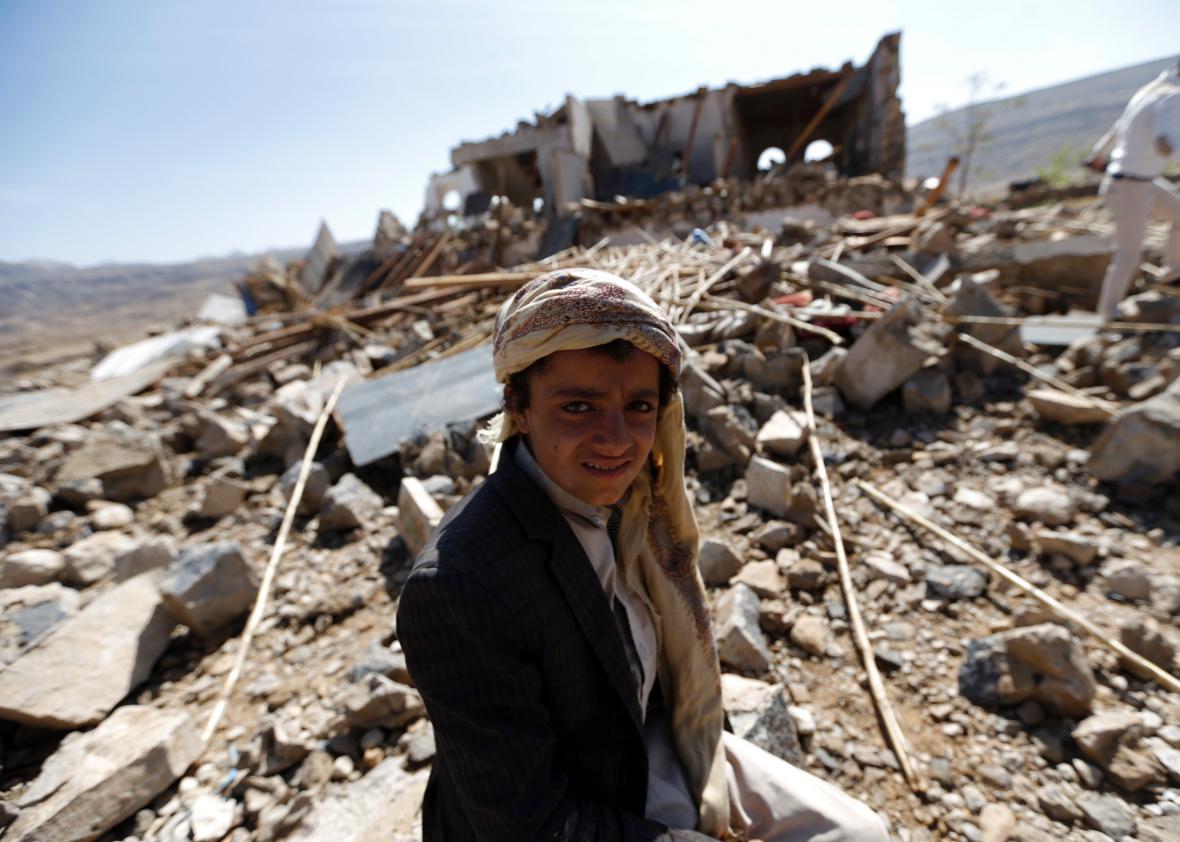The United States launched a wave of airstrikes against al-Qaida in the Arabian Peninsula, or AQAP, targets in Yemen on Friday, following more than 20 strikes on Thursday. This would appear to be a significant escalation in the fight against the group, which has been implicated in a number of plots to attack the United States. The Pentagon says the strikes targeted AQAP “fighters, heavy weapons systems, equipment infrastructure and the group’s fighting positions,” Al Jazeera reports, but residents say at least one strike hit civilian homes in Wadi Yashbum village in the southern Shabwah province, killing an unknown number of civilians.
In addition to the strikes from manned and unmanned aircraft, residents in two areas reported that U.S. troops were engaged in ground combat with al-Qaida fighters, but the Pentagon denied that any Americans were involved in ground fighting.
The new strikes in Yemen are the first major U.S. operations against AQAP since the commando raid in late January that resulted in the death of Navy SEAL William “Ryan” Owens, as well as a number of civilians, including the 8-year-old daughter of AQAP leader Anwar al-Awlaki. President Donald Trump used his address to Congress on Tuesday night to highlight Owens’ wife, hours after deflecting responsibility for the Navy SEAL’s death onto military commanders. There’s still an ongoing debate over whether any valuable intelligence was gathered in that raid. There have also been recent reports that Trump is hoping to delegate more responsibility for ordering raids in countries like Yemen to his military commanders, to speed up the process.
If the Trump administration is going to aggressively target AQAP, which many military commanders consider a more direct threat to the United States than ISIS, that wouldn’t exactly be a dramatic shift in tactics. Yemen was increasingly the center of the Obama administration’s drone war in its last few years, despite concerns that the strikes helped delegitimize and weaken the central government that collapsed in 2015.
Apart from the U.S. campaign against AQAP, there’s also an ongoing Saudi-led air campaign against the Houthi rebels, which the kingdom accuses of being a proxy for Iran. The U.S. mostly supported this campaign under Obama, despite growing concerns over the high number of civilian casualties and fears that groups like AQAP and ISIS would exploit the power vacuum created by the fighting. Still, in its final days, the Obama administration took some steps to distance itself from Saudi Arabia’s air war. Trump does not appear to be doing the same. The Washington Times reported last month that the Trump administration is poised to approve a weapons package for Saudi Arabia and Bahrain that Obama had held up over human rights concerns. As another sign of support, following a Houthi attack on a Saudi warship last month, the U.S. deployed the U.S.S. Cole—probably not coincidentally the ship that was attacked by al-Qaida off Yemen in 2000—to patrol the waterways around Yemen.
We’re still waiting for the promised new approach to fighting ISIS in Iraq and Syria, which was such a centerpiece of Trump’s campaign. But for now, at least, Yemen appears to be where most of the Trump administration’s “war on terror” attention is directed.
